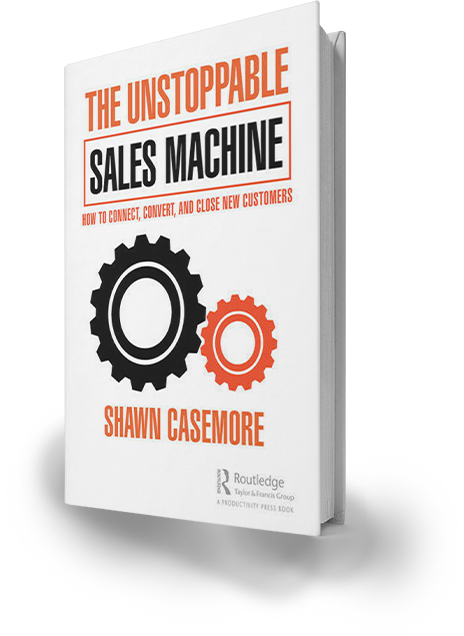The Discomfort Zone
Marcia Reynolds
Leaders, managers, and coaches are charged with getting people to stretch their limits but are often unsuccessful. Top leadership coach Marcia Reynolds says the problem is, incorrectly handled, difficult conversations create more resistance than growth. Reynolds offers a model and methods for discovering what to say so people change their own minds. As a result, leaders equip people to find their own solutions, see situations more strategically, and grow beyond their limitations.
Reynolds explains how to pick the right time and place to enter the discomfort zone and how to create a “safety bubble” so that people will trust your intentions. Then, drawing on recent discoveries in the neuroscience of learning, she helps leaders ask the kinds of questions that short-circuit the brain’s defense mechanisms and habitual thought patterns. Instead of being told, people see for themselves where they’re falling short and how they can do better, resulting in lasting changes. She includes numerous examples and case studies to see the techniques in action.
Conversations in the Discomfort Zone will never be easy. But with Reynolds’ assistance, a trip there will result in breakthrough solutions, lasting changes, and an engaged workforce.



One of the most frustrating aspects of being a leader is seeing someone’s potential and knowing they are nowhere near doing their best work. You want people to step up for the company and for themselves. You want them to take on more responsibility because you know they can. You want them to stop and think things through more fully so they make the better decisions. You and almost every leader want to make this happen.
You have probably asked them to step up and maybe even demanded they try harder. No matter what you try, nothing seems to work.
Why won’t people do what is best for themselves? Many people want to be better at who they are and what they do, but their brains get in the way of their development. To be effective in getting them to step up, you have to know how to shift their mindset.
In a recent Harvard Business Review blog post, Make Your Team Feel Powerful, Harrison Monarth said that leadership support, recognition, constant communication, and trust were essential to creating a thriving environment where everyone felt they could make a real difference in the organization.
It is true that offering people real autonomy so they have the chance to feel more powerful is your best chance to buck the trend of disengagement and apathy. Most people crave a sense of control over their situations.
Unfortunately, after a few disappointments and unproductive interactions, people often resign themselves to feeling out of control. Or they rebel in unproductive ways. Then we think they are lazy or clueless.
Simply telling people who have had bad experiences that they now have autonomy does not insure they feel powerful. Their lack of confidence can keep them from doing what they know is needed. They could feel pressured when you delegate more authority to them. They might feel even more helpless when you recognize their efforts and tell them that you trust they can do more but they aren’t sure they can meet your expectations. Being their cheerleader isn’t enough; you could scare or annoy them more than inspire them.
It’s never up to you to make people feel anything! First, you have to stop trying to fix them.
You will find more success when you try to discover how they feel now and then work with them so they discover for themselves ways that would help them feel more confident, hopeful, and powerful going forward. I explain this process in detail in my book, The Discomfort Zone: How Leaders Turn Difficult Conversations Into Breakthroughs.
Here are three tips to help you get started now to ensure your leaders step up their game.
- – Examine your judgments. What do you think is stopping the person now? If you are carrying a negative judgment about the person, they will sense your disappointment and frustration. This will block their brain from being creative. The will either feel these emotions as well or get angry in return, strengthening their resistance instead of working with you.
- – Shift your emotion and mind set. When you begin your conversation, you must set the emotional tone. How do you want him or her to feel—inspired, excited, proud, or encouraged? You must authentically feel this emotion yourself as you speak. Be careful not to lose your emotional grounding; choose one emotion word as your anchor. If something unnerves you, say this word quietly to yourself to shift back to the feeling you want to express. People who challenge us with courage, care, respect, and a belief in our power inspire us to give more.
- – Use coaching skills of reflecting and questioning to help them explore their limiting thoughts. You can’t help people step out of their boxes until you help them see the box they are living in. Inquire about how they see their role, what they want for themselves, what they fear could happen if they acted differently, what they are focusing on now, and what they need from you before they take on more. Allowing them to think out loud without judgment will help them explore, examine, and hopefully change their beliefs and behavior. Then letting them know what you believe they can do and offering to support them in taking on more authority as well as responsibility will be better received.
Flexibility, creativity, and a desire to take action comes from feeling safe to take risks, feeling trusted to work independently, and feeling confident that the end result will be good even if there are learning pains along the way. Effective leaders know how to help people shift emotionally so they want to step up on their own.
Best Seller TV :: Marcia Reynolds

Dr. Marcia Reynolds, president of Covisioning LLC, works with clients around the world who seek to develop effective leaders. She understands organizational cultures, what blocks communication and innovation, and what is needed to bring people together for better results. She has coached leaders, delivered leadership, coaching and emotional intelligence programs, and spoken at conferences for clients in 34 countries. She has also presented at many universities including Harvard Kennedy School and Cornell University,
Prior to starting her own business, Marcia’s greatest success came as a result of designing the employee development program for a semiconductor manufacturing company facing bankruptcy. Within three years, the company turned around and became the #1 stock market success in the United States when they went public in 1993.
Excerpts from her books Outsmart Your Brain, Wander Woman, and her latest, The Discomfort Zone: How Leaders Turn Difficult Conversations into Breakthroughs have appeared in many places including Harvard Management Review, Forbes.com, CNN.com, Psychology Today and The Wall Street Journal and she has appeared on ABC World News.
Marcia’s doctoral degree is in organizational psychology with a research emphasis on the challenges and needs of high-achievers. She also holds two masters degrees in education and communications.























